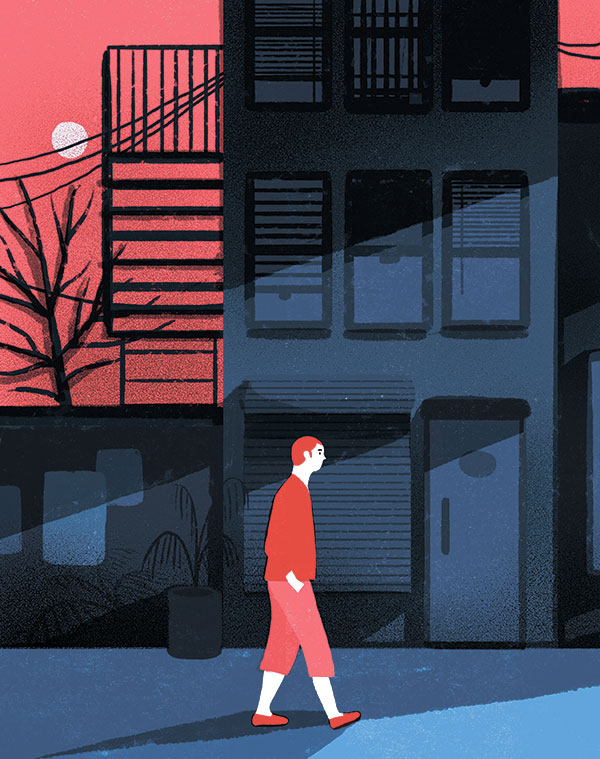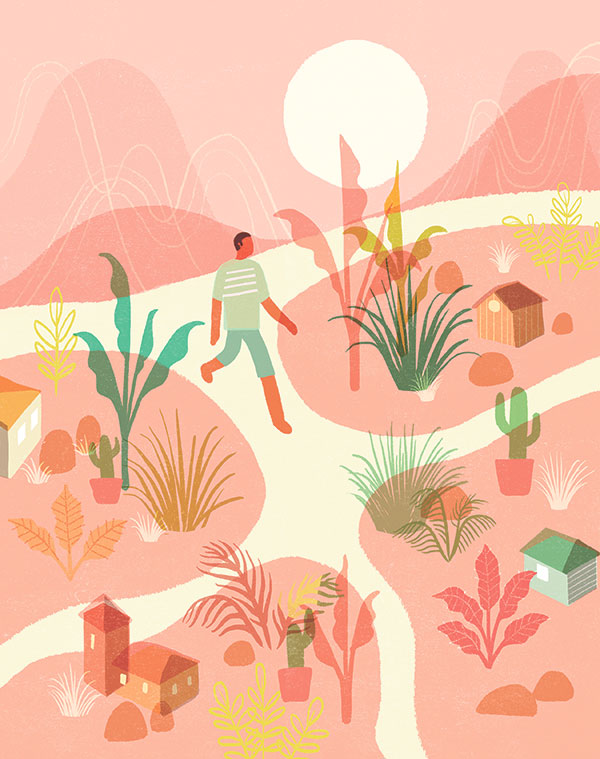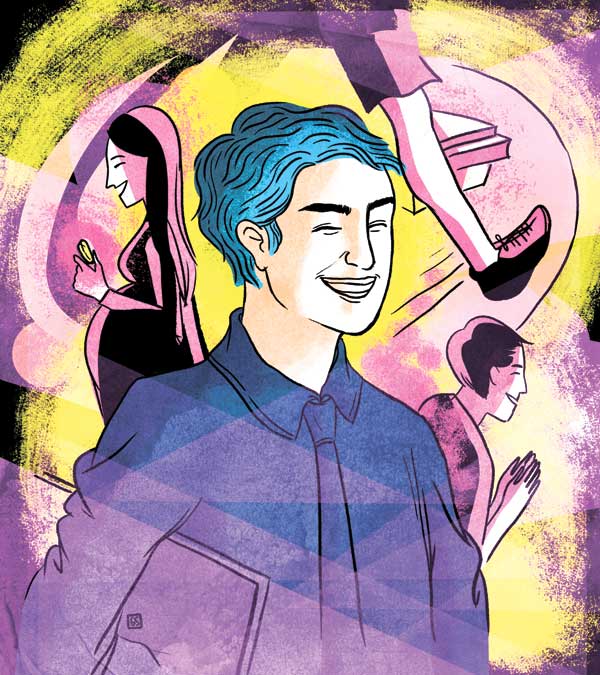Walk
By Marc Abuan
I’VE always been a walker. When my teeny-bopper heart broke the first time back in highschool, I walked straight home right after class every single day. And “home” was three jeepney rides away. This is how you cope when you lose a 15-year-old’s forever promised to you. Oh, the things you do for love.

But nonetheless, all the pavement-pounding had made such an impact to me, and just like all things that come around in your adolescent years, it happens to be beautifully bound as a romanticised memory. The act of walking has become a solitary, healing act that if done often, will make sense of the murky puddles you get into from time to time. At least for me.
In the spirit of high school heartbreak and insane boredom, I decided to take a long and winding walk, on a sunny April afternoon. This was after mowing down a once-in-a-lifetime P35 burger steak. With no definite destination in mind, I took the first street and went through.
The ceremony began by taking the canopied back street of Pelaez, junctioning two big universities in the city. Skaters used to hang around a lot here — I can hear the rolling sound of plastic skateboard wheels and grunts and broken bones, followed by groans and moans.
The walk along Jones Ave. is a delightfully pleasant one. This section has notably a spacious paved sidewalk. Take an afternoon off and walk along the area around three in the afternoon where it’s shady and cool, and there are a dozen of interesting characters you’ll run into — like a lady street-shopkeeper who refuses to sit on a single chair she keeps. She says she doesn’t like chairs. From time to time there will be a horde of crew-cut, white-shirted police trainees breaking ranks with banana cue and butong in hand.
I lost myself along the back streets behind Velez College, a place close to where I grew up. My brother and I used to walk along the side of the road going to church every Sunday, and the pavement from way back is both tragic and sentimental because it has always remained the same since 2002.
Entrenched in place is memory, and as our experiences are marked by time and space, this helps shape how we perceive the places where we live every day. It may be the reason why I am fiercely sentimental about the Cebu I grew up in — the gritty, rough network of streets filled with memories of afternoons blowing luthang and shooting pellet guns with other boys from the other back streets. We got down with the taga-ubos, made a military alliance with the taga-likod-merkado, and coming home right around Dragonball airs on TV. I staunchly refuse my old battlegrounds to be bulldozed.
A couple of times, acquaintances and friends call me out from inside their cars and offer me a ride. Some are surprised to find me in obscure streets, religiously paying attention to every single detail of the journey — it has become a running joke around my friends saying that I walk too much. In the same afternoon, I ran into an artist who also spent the afternoon walking. In truth, this city is too small to not walk incognito.
The peak of the wandering led me to Gorordo Ave., and chose to take the back streets with vibrant local neighborhoods, where I stopped by a sari-sari store to light one, sit and have a drink, and talked to a few of the ladies who were tending the stores. During that short time, peddlers came prouncing around with palitaw, two scores of kids playing good old street basketball, and other souls who’ve found the time to just sit and savor the afternoon. What I found in these streets are countless acts of simple freedom.
Why do we seek freedom in grand adventures? We dream to take on journeys to all corners of the globe, with the idea that we truly find what we are made of at the other side of the world, only to seek for something that may be found inside us all along —a sense of control beyond the things that bind us every waking day.
The bareness, simplicity, rawness of the urban walk — along with every random encounter — a dog scaring off a tartanilla, conversations with jeepney hitchhikers, haggling for rare artifacts, is a kind of thrill you can only find at the heart of the concrete jungle. The slow walk sets yourself free from the image of the drab and gray city you see from inside the jeep and the car. It breaks these pre-established ideas of urban peril, the dusty and dirty south, and turns these spaces into markers of memories, filled with people and stories, and a strange warmth of home found in the comfort of afternoon — banana cues and old songs in the radio in one of the stores hidden between the most complex network of streets. The city that was a hostile labyrinth becomes a place of fond sentimentality, where every corner is an old friend.
And walking is free — the only capital you need is bravery, curiosity, and the willingness to do so.
In commemoration of that incredibly mundane yet fateful afternoon, here is a calypso to immortalize an air-heavy, solemn in silence April afternoon in the city of Cebu:
Only phantoms remain on
April streets of rain-devoid
I was told — yes, I was one
Of the lonely ghosts who
Wander the silent, gray streams
of the empty April streets.
The day ends with a couple of cold, sweaty beers.



